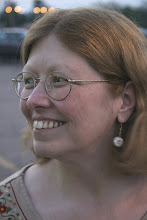 Fisherman along the Ohio River outside Western Penitentiary, Pittsburgh PA (copyright 2010 by Dory Adams)
Fisherman along the Ohio River outside Western Penitentiary, Pittsburgh PA (copyright 2010 by Dory Adams)“Overwhelming” may be the key word here, as it was quickly apparent that the NYT project staff had difficulties managing the influx of photographic images and getting the interactive global mosaic up and working. The site finally went live May 11th, a week later than planned, but I’ve not yet been able to determine if the photograph I submitted of Pittsburgh is actually part of the mosaic. Because my photo is in a large category (“community”) and in one of the largest stacks of photographs (Pennsylvania is included in the northeast region which has multiple major cities), my browser freezes or crashes before I can get through that single stack. I’ve tried viewing the site on several different computers and by using both Firefox and Explorer with no luck. There are many more stacks of photographs (sorted by region and category) to view, but I’d like to see whether my image of Pittsburgh is actually included. On May 2nd, there had been problems with uploading images to the site. While I was able to upload mine on the first try late in the afternoon and received a notice that it had been uploaded successfully, I’m not sure it actually did since others have left comments on the blog saying they’d received that same message but their image was not in the stack for their region/category.
At this point I’ve simply wasted far too much time trying to view my image only to have the system crash before I can work my way down the huge stack of photographs where it should be. So, I’m uploading my photograph here – and if any of you happen to see it on the NYT site, I’d be grateful if you’d copy the URL for that particular page and e-mail it to me (my address is in the sidebar to the right of this page).
There was a lot going on in Pittsburgh at 11:00 a.m. (15:00 U.T.C. for Eastern Standard Time) on May 2nd, including the Pittsburgh marathon with 16,000 participants and a graduation ceremony for the University of Pittsburgh. It was going to be a morning of traffic jams, detours, and bridge closures. The logistics of getting around the city would be a challenge. I considered photographing the marathon, but realized that most of the runners would’ve crossed the finish line by 11:00 a.m. I also considered photographing parishioners entering or leaving mass at St. Benedict the Moor Church since the gorgeous statue of the saint atop the church is a favorite photographic subject of mine, but the mass schedule did not quite jive with the designated moment.
Pittsburgh’s urban trails are a favorite aspect of the city for me, so I decided to photograph at a stretch of the Allegheny Trail along the Ohio River near Western Penitentiary that always interests me. My husband and I walk that stretch from time to time, and I’m always fascinated by the prison there. Over the past few years it has gone from closed and vacant to fully operational again. We’ve watched as it transitioned from quiet and spooky obsolescence, a big tombstone of sorts, to an active and menacing sight with gleaming new razor wire atop the walls and fences. First opened more than a century ago in 1882, the structure looks medieval. This is the kind of place you might have nightmares about, and in fact I have a recurring dream which takes place on the side street beside the tall stone wall of the prison yard where posted signs warn “no stopping or standing.”
In serene juxtaposition to the penitentiary is the Ohio River scenery. On the rainy Sunday morning of the photo project, I came upon a fisherman wearing a yellow rain slicker who was fishing from a dock just beyond the trail and the prison walls. I photographed the fisherman on the outside enjoying his leisure time while the men inside those walls served their time. What can’t be captured in the photograph is the sound coming from the prison, an echoing din of voices talking and shouting above the background noise of movement inside. That sound bounces from wall to wall around the interior of the building to the outer yard walls and eventually beyond. I was amazed by the sound and wondered how much louder it must be inside. It had been a cold winter day the last time I’d walked this trail, and except for the Christmas Day visitors arriving in the parking lot, it had been very quiet then.
Locals refer to it as Western Pen, but the official name for the facility is The State Correctional Institution – Pittsburgh. It had operated as a maximum security prison until closing in 2005, and then in 2007 it reopened as a medium security prison due to dangerous overcrowding in the PA prison system. This image of Western Pen would fit into my category of “reclaimed things” here at In This Light where I have ongoing themes of “abandoned things” and “reclaimed things.” For the purpose of the “A Moment in Time” project, it seems to fit best in their category of “community.” The penitentiary is a community within itself, and it’s also part of the larger community of the neighborhood and city, albeit a walled-in and gated one of the unfashionable kind.
The editors at Lens who undertook the project of trying to capture a single moment globally are to be commended for their efforts. It’s truly a wonderful project, and I will no doubt spend more hours browsing through the images. Perhaps the editors at Lens will improve their global mosaic so that the images on the interactive site can be searched by city instead of larger regions, so that all those who contributed photographs to the project can have their images seen.








